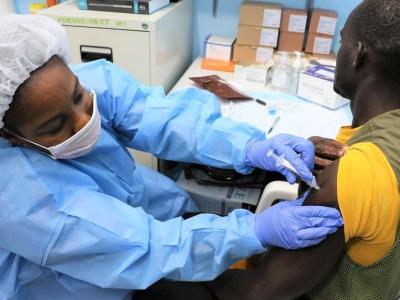Feb 25, 2009
Tactics for discouraging personal antiviral stockpiling
Educational campaigns may not be enough to curtail personal stockpiling of oseltamivir (Tamiflu) during infectious disease outbreaks, but promoting appropriate prescribing practices might help, according to a study published in the Feb 23 issue of Infection Control and Hospital Epidemiology. The researchers surveyed 109 patients who received prescriptions for oseltamivir in the fall of 2005 and compared their responses with those of 825 matched controls. Of the two-thirds who probably obtained oseltamivir for stockpiling, only two patients reported that they took the drug. Survey responses between the medication group and controls varied little, except regarding worries about avian flu.
[Feb 23 Infect Control Hosp Epidemiol abstract]
H5N1 detected in India, H7 strain found in Czech waterfowl
Officials in India's West Bengal state today confirmed an H5N1 avian influenza outbreak in poultry near the town of Siliguri and said they planned to cull 5,000 birds to stop the outbreak, according to a report from the Press Trust of India. Elsewhere, veterinary authorities in the Czech Republic said yesterday that they found low-pathogenic H7 avian influenza in geese at a pond in the Hodonin region in the country's southeast, the Czech News Agency (CAN) reported. The virus was found in 9 of 60 randomly selected geese. Animal health workers will cull about 3,000 geese and 350 ducks to stem the virus.
[Feb 25 Press Trust of India story]
Researchers suggest unique H5N1 virus sparked 2007 India outbreak
An H5N1 avian influenza isolate found in an outbreak in India's Manipur state in 2005 might have been independently introduced to the area, perhaps through wild waterfowl, according to a report that appeared yesterday in Virology Journal. Investigation of the genome found that the virus belonged to clade 2.2 but was distinct from earlier Indian isolates. It more closely resembled isolates from waterfowl in Russia, China, and Mongolia.
[Feb 24 Virology Journal abstract]
PharmAthene gives some phase 2 results for anthrax vaccine
PharmAthene Inc. reported that its second-generation anthrax vaccine, Sparvax, was safe, well-tolerated, and immunogenic in a phase 2 trial involving 415 volunteers. Antibody concentrations in the volunteers were higher with one of two dosing schedules tested but did not differ according to dose levels. The company said the findings indicate that SparVax "may be a promising second generation rPA [recombinant protective antigen] vaccine candidate" for use in civilians. The firm issued a news release following a poster presentation yesterday at the American Society for Microbiology's (ASM's) Biodefense and Emerging Diseases Research Meeting in Baltimore.
[Feb 24 PharmAthene news release]
ASM offers glimpses from biodefense meeting
In a news release from the Biodefense and Emerging Diseases Research Meeting, the ASM provided some highlights from lectures and poster presentations on pandemic flu, the 1918 flu virus, and the anthrax letter investigation. Bruce Levin of Emory University lectured on whether the current worries about the risk of an H5N1 flu pandemic are justified, and scientists described a vaccine that protected mice and ferrets from the 1918 flu virus, ASM reported. The release also gives an overview of a presentation by several speakers on the science behind the anthrax investigation.
[Feb 24 EurekAlert press release]
Gates funds study of flu immunization in rural pregnant women
Cincinnati Children's Hospital Medical Center said it has received a $6.7 million Gates Foundation grant to study influenza vaccination in pregnant women in rural areas with limited resources. The study, to be conducted in Bangladesh or Nepal, expands on a recent randomized trial that showed that flu immunization in pregnant women protects both the women and their infants. The study will involve 1,500 women and take 5 years, the hospital said yesterday.


















